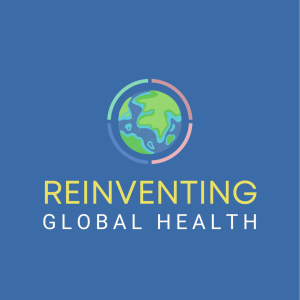
Thursday Feb 09, 2023
What is Wrong with Global Health in 2022? What are the Solutions? - with Alain L. Fymat, PhD, PhD
COVID-19 has underlined the current poor state of global health. In this podcast, I have tried to identify the underlying problems that were evidenced, at least in part, by the root causes of the pandemic. My remarks were largely based on my published book “Pandemics: Prescription for Prediction and Prevention”*, especially its Chapter 18.
To summarize:
We live in an unruly, not easily managed world of ~ 8 billion people that is constantly growing. Notwithstanding the plethora of international, regional, national, and other organizations, there are glaring inequities among nations, principally between developed and poor ones. In particular, within the context of COVID-19, the prime organization among them, the World Health Organization (WHO), has been dilatory, at times issuing contradictory recommendations, and deferring to those powerful nations that fund it most (in this instance, China).
In this context, humanity has again proven to have a short memory of past epidemics/pandemics, not having even clearly identified what are their root causes. It is therefore no wonder that these events will continue to haunt us till the end of times ... unless we are able to devise appropriate strategies for predicting/preventing them such as the one I have proposed. For this purpose, I have identified ten important measures:
- Highlight global health security;
- Create and strengthen necessary mechanisms;
- Promote multidisciplinary engagement;
- Strengthen multisectoral coordination;
- Emphasize the importance of financial preparedness;
- Improve early warning and detection;
- Collect and share data in a timely manner;
- Conduct laboratory testing;
- Develop joint outbreak response capacities; and
- Take appropriate science-based actions.
I have also identified ten intertwined cardinal factors that are the root causes of pandemics that need to be simultaneously tackled and remedied:
- Rapid growth of global human population;
- Increased globalization;
- Environmental degradation and destabilization of ecosystems;
- Creation of new urban or agricultural ecosystems;
- Economies of scale and monocultures in agriculture and dysfunctional agrifood systems;
- Loss of land and ocean biodiversity;
- Water scarcity;
- Human-induced climate change;
- Societal inequities; and
- Irrational mass denialism of hard-won facts of science (vaccinations, antimicrobial overuse).
Some of the above factors could be correlated with the United Nations (U.N.) Sustainable Development Goals (SDG).
In the same book, I have offered a blueprint for a 6-level strategic pandemic prediction and prevention program that should herald the beginning of the end of pandemics:
- Creating of a new “World Environment Organization”;
- Shifting the current health paradigm to a “One-World/One-ecoHealth paradigm” that will be grounded by a new “International Pandemic Treaty” and other international laws;
- Involving international, intergovernmental, regional, and national health organizations;
- Incorporating the “Global Human Virome Project”;
- Actively developing models (epidemiological, climate-type) with their enabling technologies and databases: and
- Folding-in the development of vaccines & therapeutics and the corresponding research.
The value and success of the proposed approach will be gauged by four measures:
- Reducing causes of new infectious diseases;
- Preventing outbreaks and epidemics from becoming pandemics;
- Preparing for potential future pandemics that could not be prevented; and
- Ensuring that the causing virus does not re-emerge thereafter (e.g., by sustaining itself in domestic animals).
Within that blueprint, I truly believe we can reach a stage where pandemics could at long last be predicted and prevented.
*Book (hard cover and paperback): Pandemics: Prescription for Prediction and Prevention: https://www.amazon.com/Pandemics-Prescription-Prediction-Alain-Fymat/dp/0228867215
BIO
Dr. Fymat is a medical-physical scientist and an educator. He is the current President/CEO and Professor at the International Institute of Medicine and Science with a previous appointment as Executive Vice President, Chief Operating Officer and Professor at the Weil Institute of Critical Care Medicine. He was educated at the University of Paris-Sorbonne and the University of California at Los Angeles. He was formerly Professor of Radiology, Radiological Sciences, Radiation Medicine (Oncology), Critical Care Medicine, and Physics at several U.S. and European Universities. Previously, he was Deputy Director (Western Region) of the U.S. Department of Veterans Affairs, Veterans Health Administration (Office of Research Oversight), and Director of the Magnetic Resonance Imaging Center and for a time Acting Chair of Radiology at its Loma Linda, California Medical Center. He has extensively published (~ 425 publications including patents, books & monographs, book chapters, refereed articles). As invited/keynote speaker and member of organizing committees of international congresses and symposia, he has lectured extensively across the USA, Canada, Europe, Africa and Asia. He has been the recipient of numerous research grants from government, academia and private industry, and has consulted extensively with these entities. He is a Board member of several institutions and Health Advisor of the American Heart & Stroke Association (Coachella Valley Division, California). He is Editor-in-Chief, Honorable Editor or Editor of 35 medical-scientific Journals. He published more than 167 articles in different journals.
Comments (0)
To leave or reply to comments, please download free Podbean or
No Comments
To leave or reply to comments,
please download free Podbean App.